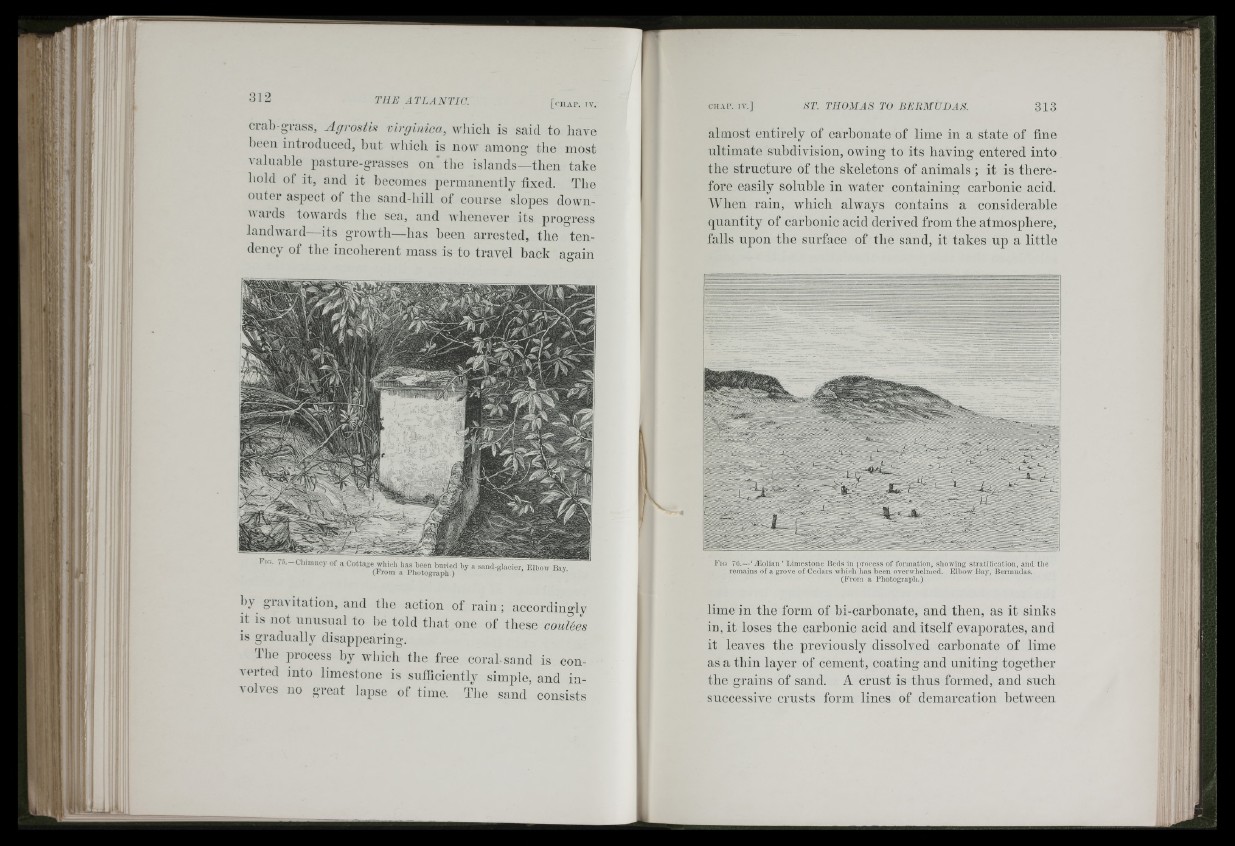
r 'I f
r ‘
[I 'H A P . r v .
cral)-gi*ass, Agrostis virglnicxi, Avliicli is said to have
heen introduced, but wbicli is now among tbe most
valuable ¡Aasture-grasses on'tbe islands—tben take
bold of it, and it becomes permanently fixed. Tbe
outer aspect of tlie sand-bill of course 'slopes downwards
towards tbe sea, and wbcnever its progress
landward—its growth—bas been arrested, tbe tendency
of tbe incoherent mass is to travel back again
C I I A I ’ . IV . ] ST. THOMAS TO BERMUDAS. 313
almost entirely of carbonate of lime in a state of fine
ultimate subdivision, owing to its having entered into
tbe structure of the skeletons of animals ; it is therefore
easily solirble in Avater containing carbonic acid.
When rain, Avbicli always contains a considerable
quantity of carbonic acid derived from the atmosphere,
falls upon the surface of the sand, it takes up a little
F t ., 7 5 .-C l,im n e y o f a C o ttag e w l,id , h a s b e e n b u rie d b y a s a u d -g la d e r. E lb ow Bay
(T rom a P h o to g r a p h )
by gravitation, and tlie action of rain ; accordingly
it is not unusual to be told tbat one of these coulées
is gradually disappearing.
Tbe process by Avbicb tbe free coral-sand is converted
into limestone is sufficiently simple, and involves
no great lapse of time. Tbe sand consists
F ig V«.— ‘ iUolian ’ L im e s to n e Bed s i n jiro c e ss o f fo rm a tio n , sh ow in g s tra tilie a tio n , a n d th e
rem a in s o f a g ro v e o f C ed a rs whioh lias b e e n o v e rw h e liu ed . Llbow Bay, B erm u d as.
(F i’om a F h o to g ra p li.)
lime in the form of bi-carbonate, and then, as it sinks
in, it loses the carbonic acid and itself evaporates, and
it leaves the previously dissolved carbonate of lime
as a thin layer of cement, coating and uniting together
the grains of sand. A crust is thus formed, and such
successive crusts form lines of demarcation hetween
5' .
I ' t te :
9:4
li :
i f ; ,1
liH"
Iff iii!
ll
iff 1
% i::
m
h i
\ i
I IH
,r;;l V ]